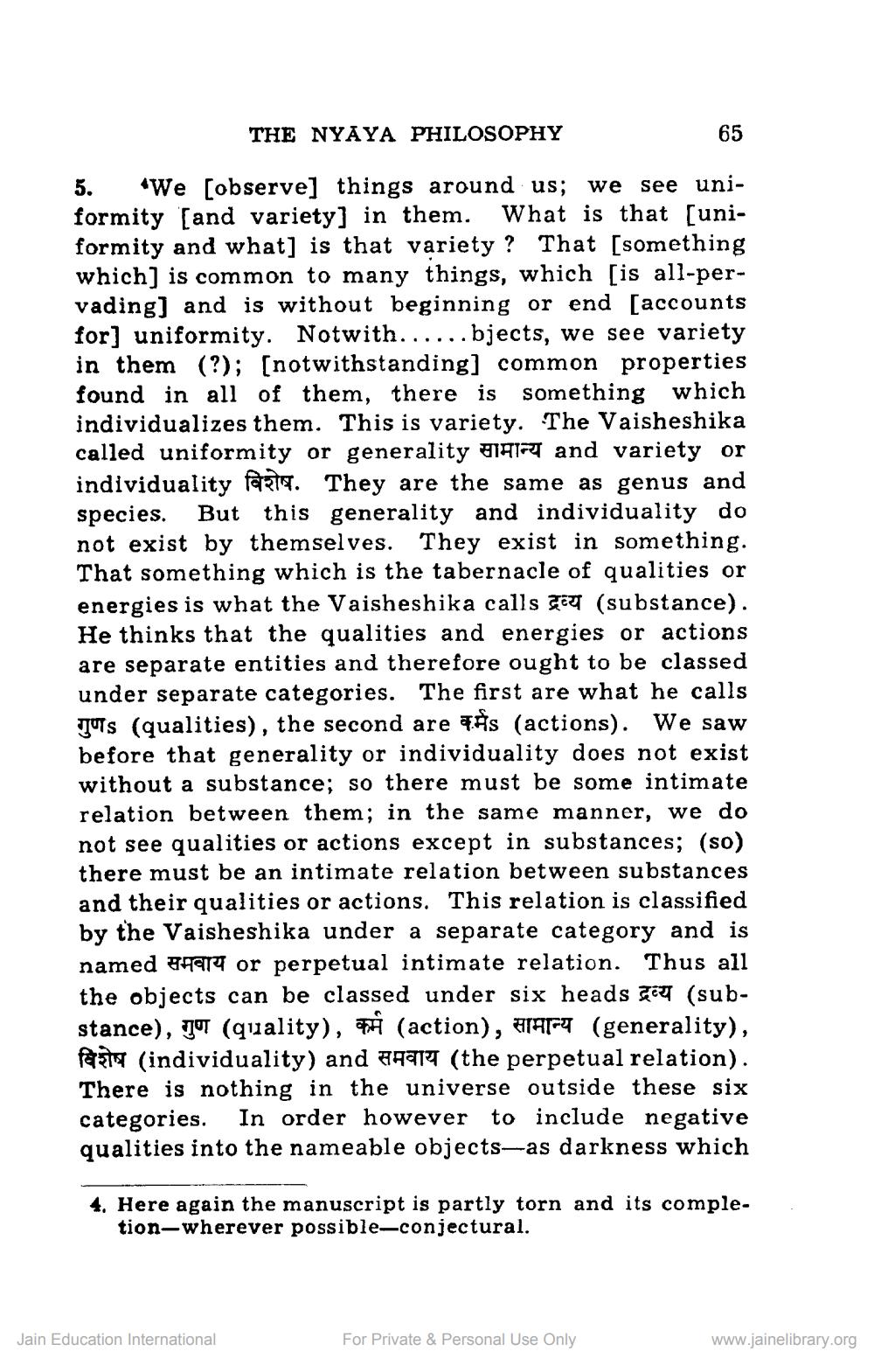________________
THE NYAYA PHILOSOPHY
65
5. We [observe] things around us; we see uniformity (and variety] in them. What is that [uniformity and what] is that variety ? That (something which] is common to many things, which [is all-pervading) and is without beginning or end [accounts for] uniformity. Notwith......bjects, we see variety in them (?); [notwithstanding] common properties found in all of them, there is something which individualizes them. This is variety. The Vaisheshika called uniformity or generality HA17 and variety or individuality fast. They are the same as genus and species. But this generality and individuality do not exist by themselves. They exist in something. That something which is the tabernacle of qualities or energies is what the Vaisheshika calls sent (substance). He thinks that the qualities and energies or actions are separate entities and therefore ought to be classed under separate categories. The first are what he calls Jus (qualities), the second are Às (actions). We saw before that generality or individuality does not exist without a substance; so there must be some intimate relation between them; in the same manner, we do not see qualities or actions except in substances; (so) there must be an intimate relation between substances and their qualities or actions. This relation is classified by the Vaisheshika under a separate category and is named phary or perpetual intimate relation. Thus all the objects can be classed under six heads scu (substance), jot (quality), fi (action), araru (generality), Party (individuality) and 4914 (the perpetual relation). There is nothing in the universe outside these six categories. In order however to include negative qualities into the nameable objects-as darkness which
4. Here again the manuscript is partly torn and its comple.
tion-wherever possible-conjectural.
Jain Education International
For Private & Personal Use Only
www.jainelibrary.org




